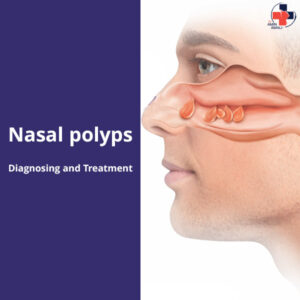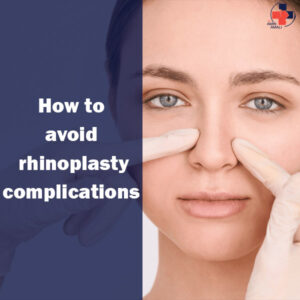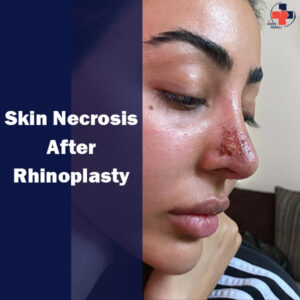Rhinoplasty, commonly known as a nose job, can be a life-changing procedure for many. While the focus is often on the exciting results, bruising is a common side effect that can cause some anxiety. This article will guide you through everything you need to know about bruising after rhinoplasty, from understanding the timeline to helpful tips for minimizing its appearance and speeding up the healing process.

What is the reason Bruising After a rhinoplasty
There are two main reasons why bruising occurs after rhinoplasty:
- Disrupted Blood Vessels: The nature of the surgery itself disrupts tiny blood vessels in and around the nose. This disruption causes some blood to leak out and collect under the skin, showing up as a bruise. The nose is a delicate area with a rich network of blood vessels, making it especially prone to this during surgery.
- Healing Process: Bruising is actually a sign of your body’s healing process at work. As your body repairs the surgical site, it cleans up the leaked blood, which can cause the bruise to change colors (from red to purple to yellow) before it fades completely.
Bruising around eyes After a rhinoplasty
Bruising around the eyes is a very common side effect following a rhinoplasty, or nose job. It occurs due to the disruption of tiny blood vessels during the surgical procedure. These small blood vessels leak blood, which collects under the skin and shows up as a bruise.
The bruising typically appears within the first 48 hours after surgery and reaches its peak intensity around 2-4 days. Fortunately, it’s usually temporary and should progressively fade over the following 1-2 weeks. While some people may see significant improvement within a week, slight discoloration can linger for another week or two.
How to get rid of bruising after nose job
While you can’t completely eliminate bruising after rhinoplasty, there are ways to help reduce its appearance and promote healing:
Elevation: Prop yourself up with pillows for the first few days after surgery. This simple step helps reduce swelling and fluid accumulation around the surgical site, which can significantly worsen bruising.
Cold compresses: Apply cold compresses wrapped in a thin cloth to the cheek area for at least two days post-surgery. The cold constricts blood vessels, minimizing further bruising and offering some pain relief.
Rest and hydration: Your body heals best when well-rested. Plan to get plenty of sleep and prioritize relaxation during the first few days. Additionally, staying hydrated by drinking plenty of fluids helps reduce inflammation and promotes overall healing.
Avoid certain substances: Smoking and alcohol consumption can hinder healing and worsen bruising by interfering with blood flow and circulation. Avoid them for at least two weeks before and after surgery.
Dietary choices: Consider incorporating pineapple into your diet. Pineapple contains bromelain, an enzyme with anti-inflammatory properties that may aid healing. Discuss any dietary changes with your doctor to ensure they complement your recovery plan.
Talk to your doctor: While some over-the-counter remedies like arnica supplements are marketed for bruising, consult your rhinoplasty surgeon before using them to ensure they won’t interfere with your medications or healing process. Additionally, some surgeons may offer laser treatments specifically designed to accelerate the healing of post-surgical bruising. Discuss these options with your doctor to see if they might be right for you.
Remember, following your doctor’s specific post-operative instructions is crucial for optimal healing and minimizing bruising. They’ll provide tailored guidance based on your individual case and procedure.
Bruising after rhinoplasty timeline
Bruising after rhinoplasty is a common side effect, but the good news is it’s temporary. Here’s a general timeline of what to expect:
The First Few Days: You might not see much bruising right after surgery. The initial discoloration is reddish due to oxygenated blood in the tissues.
Days 1-3: This is when bruising typically becomes most noticeable. It often appears around the eyes, giving you a bit of a “black eye” look. The color might deepen to purple or blue.
Fading and Resolution: Around Day 5: The body starts to reabsorb the blood, and the bruising should begin to lighten. You might see some greenish hues emerge.
One to Two Weeks: By this point, most patients experience significant fading. The remaining bruise may turn yellowish-brown. Milder bruising might even be completely gone.
Two to Three Weeks: This is the typical timeframe for most patients to see complete resolution of bruising. However, some cases with extensive bruising may take a little longer.
Important to Remember:
This is a general timeline, and individual experiences can vary. Factors like the complexity of the surgery and your body’s natural healing rate can influence how long bruising lasts.
If you experience any significant bleeding or prolonged bruising beyond a few weeks, consult your doctor to rule out any complications.












